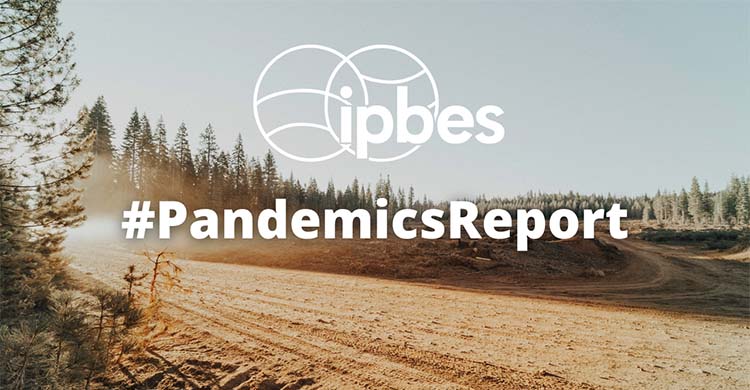IPBES Launches New Report on Biodiversity and Pandemics

IPBES releases new report on links between the degradation of nature and increasing risk of pandemics
Bonn, 29 October 2020 – The report of a workshop on the links between the degradation of nature and increasing risk of pandemics has just been released.
The workshop was convened by the Intergovernmental Science-Policy Platform on Biodiversity and Ecosystem Services (IPBES) with the participation of 22 leading experts from around the world. The experts conclude that it will be possible to minimize the risks of future pandemics, but a seismic shift in approach from reaction to prevention will be required.
“There is no great mystery about the cause of the COVID-19 pandemic – or of any modern pandemic. The same human activities that drive climate change and biodiversity loss also drive pandemic risk through their impacts on our environment. Changes in the way we use land; the expansion and intensification of agriculture; and unsustainable trade, production and consumption disrupt nature and increase contact between wildlife, livestock, pathogens and people. This is the path to pandemics.”
Dr. Peter Daszak, President of EcoHealth Alliance and Chair of the IPBES workshop
As described in the UNEP report Preventing the next pandemic - Zoonotic diseases and how to break the chain of transmission, the same two human activities pose the greatest threat to the survival of endangered migratory species and the greatest risk of spillovers of zoonoses from animals to people. Those activities are the consumptive use of wild species and the destruction and fragmentation of habitat.
Over two thirds of emerging diseases (such as Ebola, Zika and Nipah encephalitis), and almost all known pandemics (such as influenza, HIV/AIDS and COVID-19) are caused by microbes of animal origin. These microbes can spill over to affect people as a result of contact with wildlife or livestock. An estimated 1.7 million currently undiscovered viruses exist in mammal and avian hosts, and between a third and a half of them could potentially infect humans. The main known reservoirs of pathogens with pandemic potential are mammals and some birds including livestock such as pigs, camels and poultry.
Among the policy options presented in the report to reduce and address the risk of pandemics are:
- Developing and incorporating pandemic and emerging disease risk health impact assessments in major development and land-use projects, while reforming financial aid for land-use so that benefits and risks to biodiversity and health are recognized and explicitly targeted.
- Enabling changes to reduce the types of consumption, globalized agricultural expansion and trade that have led to pandemics – this could include taxes or levies on meat consumption, livestock production and other forms of high pandemic-risk activities.
- Reducing zoonotic disease risks in the international wildlife trade through a new intergovernmental ‘health and trade’ partnership; reducing or removing high disease-risk species in the wildlife trade; enhancing law enforcement in all aspects of the illegal wildlife trade and improving community education in disease hotspots about the health risks of wildlife trade.
For the full list of policy options, see the executive summary of the report.
“We welcome the focus of IPBES on the relationship between infectious diseases and human activities that impact wild species of animals and their habitats. Importantly, many consumptive uses of wild species do not involve international trade, and CMS is working to increase knowledge and attention to such activities, which may also be linked to increased risk of zoonotic diseases.”
Amy Fraenkel, Executive Secretary, Convention on Migratory Species
About IPBES:
Often described as the “IPCC for biodiversity”, IPBES is an independent intergovernmental body comprising more than 130 Member Governments. Established in 2012, IPBES provides policymakers with objective scientific assessments about the state of knowledge regarding the planet’s biodiversity, ecosystems and the contributions they make to people, as well as the tools and methods to protect and sustainably use these vital natural assets. For more information about IPBES and its assessments visit www.ipbes.net.
Last updated on 19 November 2020


